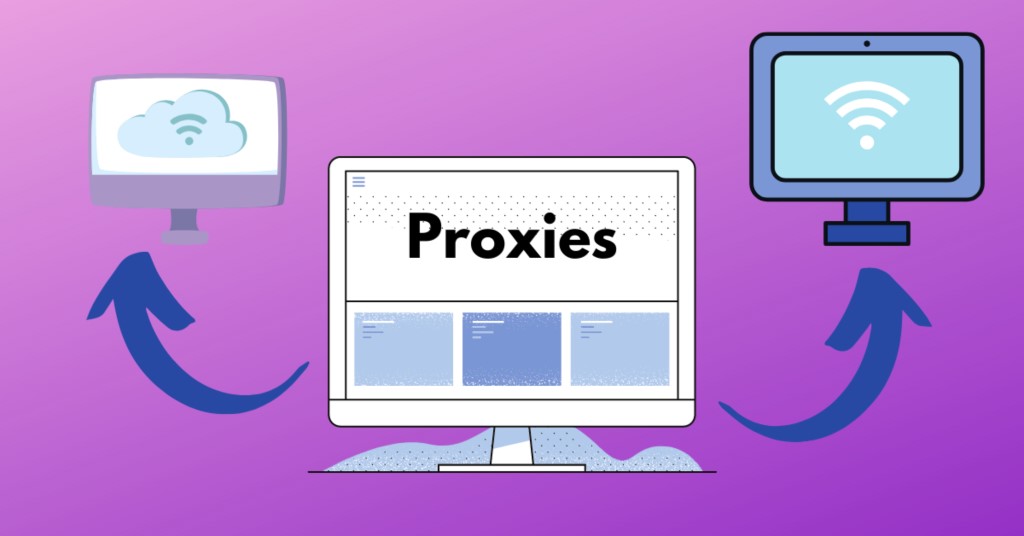More and more people and businesses embrace the digital world thanks to increased internet penetration and affordability of the infrastructure and tools to digitize operations as well as access online services. With it, technologies that facilitate smooth access to such services are equally growing in popularity. Some of these tools – proxies and virtual private networks (VPNs)- even enable users to traverse geographical boundaries virtually to bypass geo-blocking. This article will primarily focus on proxies, delving into what they are and what they are used for.
What are Proxies?
Also known as proxy servers, proxies are hardware-based or software-based additions to a network that are designed to act as ‘middlemen.’ They are a point of contact that internet traffic first has to go through on its way to either the target website or web browser. What we mean by this is that outgoing HTTP/HTTPS requests sent by a web browser first pass through the proxy. In the process, they are stripped of their original IP address, with the proxy server assigning a new IP address before directing them to the web server. Similarly, the intermediary first receives the incoming HTML responses (from the web server) before sending them to the web client (browser).
There are different types of proxies, namely:
- Residential proxies
- Datacenter proxies
- Mobile proxies
- Transparent proxies
- HTTPS/HTTP proxies
- SOCKS proxies
- Rotating proxies
- Static proxies
- Shared proxies
- Dedicated proxies
- Anonymous and high anonymity proxies
- Reverse proxies
- Forward proxies
Functions of a Proxy Server
The various proxy types listed above are designed to perform specific functions. These functions include:
- A proxy (forward proxy) anonymizes the browsing by changing the assigned IP address
- Online anonymity enhances security by preventing snooping eyes from discovering proxy users’ real IP addresses
- Mobile proxies block cookie installation, thus preventing cookie-based tracking
- Rotating residential and datacenter proxies are used to facilitate seamless web scraping
- Location-based proxies such as a US proxy help to bypass geo-restrictions
- Transparent proxies block access to specific websites
- Client-side HTTP/HTTPS proxies filter the HTML responses to block malicious links and files; they also block access to suspicious websites
- Server-side HTTP/HTTPS proxies improve the performance of web servers by caching frequently accessed web pages and files
- Reverse proxies provide load-balancing capabilities: they balance the load by distributing incoming requests among different servers, preventing a scenario whereby a single server is overwhelmed by the number of requests
- Residential proxies are used in social media management (creating and managing multiple social media accounts)
- Ad verification: by enabling users to bypass geo-restrictions, proxies enable businesses to verify that their ads are being displayed in a format that adheres to the agreed-upon terms and conditions
- SOCKS proxies are used to facilitate seamless peer-to-peer connections, general browsing, and emailing
Proxies vs. Virtual Private Networks
As stated, proxies are used to circumvent geo-blocking restrictions. They achieve this by assigning a new IP address associated with a different country. For instance, if a user wants to access the US websites of Netflix, a website known for displaying location-specific content to different users, then they can use a US proxy. The US proxy will assign their requests a US-based IP address, creating the illusion that the user is physically located in the US. As a result, the web server will send the same responses it would ordinarily send to any of its US-based customers or visitors. Find more info on location-based proxies here.
It is, however, crucial to note that users can also use VPNs to bypass geo-restrictions. VPNs create a secure, encrypted tunnel between a user’s computer and an exit node (a server that belongs to the service provider and is located in a different country). The user’s outgoing requests acquire the exit node’s IP address. This makes it appear as though the requests are originating from the provider’s server rather than the user’s computer.
A comparison of the differences between proxies and virtual private networks is summarized in the table below:
| Proxy Servers | VPNs |
| They are fast because they do not have to encrypt data | VPNs are slow because they must first encrypt the data before routing it through the tunnels |
| Proxy server protocols (HTTP, HTTPS, and SOCKS) cannot be easily blocked as that would block access to the internet | VPN protocols can be blocked (this is common in countries such as China, which are led by dictatorial regimes) |
| They perform numerous functions | They are only meant to serve two main functions – provide online anonymity by masking the IP address and help to bypass geo-restrictions |
| Proxy servers change the user’s real IP address | VPNs change the user’s real IP address |
Conclusion
Proxies are a crucial technology that businesses and individual users can utilize for different functions. Such functions include accessing geo-blocked content, web scraping, anonymizing the browsing experience, securing the connection by blocking harmful content, and more. At the same time, VPNs can bypass geo-restrictions, but proxies stand out because they are fast and cannot be easily blocked.







Leave a Reply